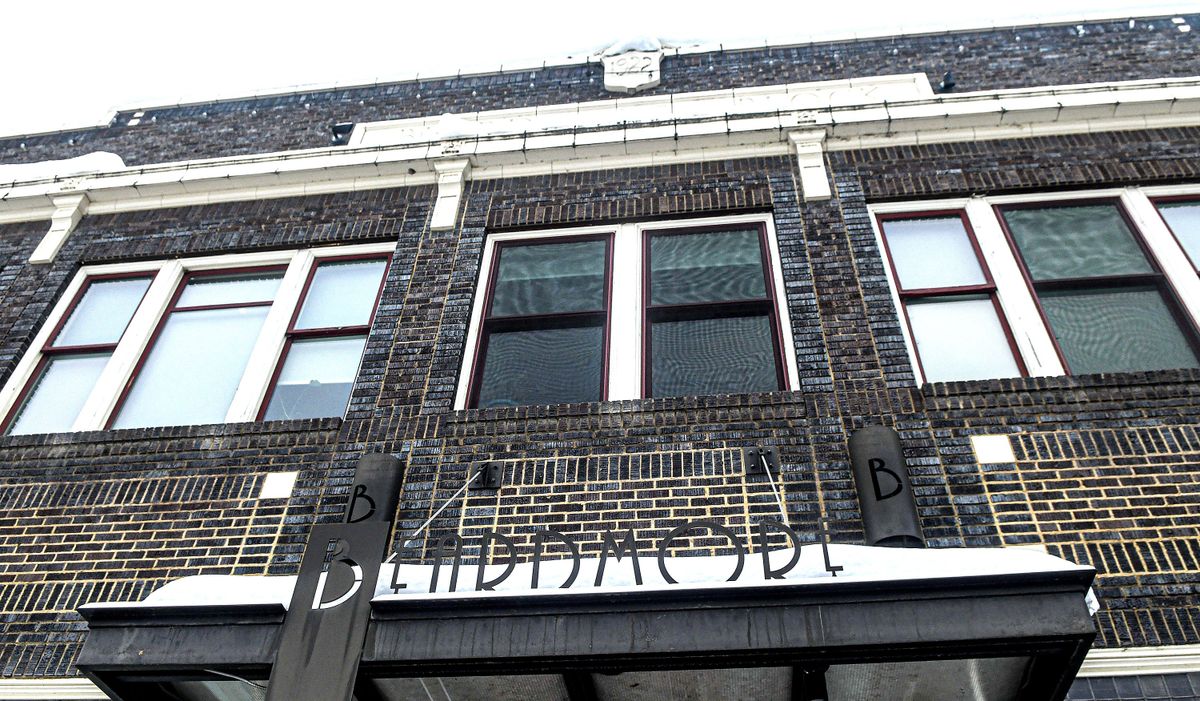As 100th anniversary approaches, foundation plans to restore Priest River’s Rex Theater

PRIEST RIVER, Idaho – In 1923, a pioneering filmmaker named Nell Shipman premiered her silent feature film, “The Grub-Stake,” at the new Rex Theater in Priest River.
The film was about a young woman falsely lured to Alaska by a gambler with promises of marriage and a grubstake for a gold mine. It was shot in part on location at nearby Priest Lake, where Shipman kept a menagerie of wild animals.
The new theater offered viewers a cinematic experience usually only found at the time at movie palaces in bigger cities. Also known as The Roxy, it continued to show films and performances through the 1950s. But in the decades since, it has fallen into disrepair, disuse and obscurity.
The Rex Theater Foundation hopes that returning the venue to its former glory will once again bring additional art and culture to North Idaho.
The Rex occupies the north end of a larger building called the Beardmore Block, named for its original owner, Charles Beardmore, a timber businessman who became the area’s largest employer.
“For him, it was an expression of a great confidence in the future of Priest River and northern Idaho,” said Beardmore’s great-grandson, Brian Runberg.
For Runberg, the building represents a connection to both the past and future. He remembers playing inside the building as a child before the family sold it in 1972.
Then in 2006, Runberg, a Seattle-based architect, repurchased and restored the rest of the building with a sustainable design certified by the U.S. Green Building Council. Today various businesses rent its trendy office space and storefronts.
But the theater still sits empty.
The dream to change that began with three local musicians looking for a venue for their classic rock band, Bodie Canyon.
“We thought, wouldn’t it be cool if we could come back in here just for a place to practice and have performances,” said drummer Gary Stewart.
Growing up in Priest River, Stewart remembers how the local bars used to host live acts, but those have since faded away. “Now there’s really no place around here to go see any live performances,” he said.
So, Stewart and bandmates Chad Summers and Geoff Rusho came up with a plan to save the old theater. Yet what began as a simple desire for a nice place to have a jam session has evolved into a deeper a vision of love for their community, its legacy and the arts.
They reached out to Runberg and formed a nonprofit with a nine-member board. Runberg offered the foundation a 20-year lease at $1 a year, with the possibility of extensions and a direct purchase of the theater. He plans to match some of the funds raised.
“We’re enthused and invigorated about getting this going,” Runberg said. “Not just for the Priest River community, but the region.”
The foundation’s mission is to operate the theater as a cultural and performing arts center after it is restored. The Rex will showcase local, regional and occasionally national performance acts, while also being available as a community-based resource for schools, community organizations, businesses and individuals.
A lot of work still needs to be done before then.
“I don’t ever remember seeing this thing open,” Stewart said as he overlooked the auditorium from a rickety balcony. “And I’ll be 60 next year.”
He recalled his father telling him about seeing movies there in the 1930s, ’40s and ’50s.
In the 1980s, the space was used as a warehouse for a hardware store. That’s when an artificial wood floor was put in to be level with the stage. When they rip that flooring back out, the stage will be 8 feet high.
The long and narrow auditorium will have a 250-person occupancy with flexible seating to accommodate different kinds of events.
“We want to be able to bring tables and chairs in to have a dinner or remove them to have a dance,” said board president Chad Summers.
The design plans show two bars: one on the ground floor and one upstairs where the projection room used to be. Two bars will allow the option to separate the 21-and-older crowd.
The expectation is to host not only music, but also drama, dance performance, comedy and speeches on stage.
“Acoustics will be a big thing here, it’s going to be super important to get it right,” said Dan Eskelson, another board member.
The board has regular meetings with its architects and has created a five-phase plan.
Work has begun with the crew cleaning out debris.
The foundation hosted an open house Dec. 23, showing the community inside the theater and their plans for it.
“We have great enthusiasm among quite a few people in town and it seems to be building,” Eskelson said.
The foundation is exploring funding options and taking donations at rextheater.org. A few grants, including three from Avista Foundation totaling $75,000, have helped them get started.
The next steps are to gut all the rotting wood, then rebuild the roof and framing. Outside, they will install a ticket booth and marquee. Inside, they will rebuild the floor, stage and mezzanine; and add a concession area, an audio-visual control room and four restrooms.
If enough demolition can be done in time, they hope to screen “The Grub-Stake” inside the theater’s shell on the 100th anniversary in March.